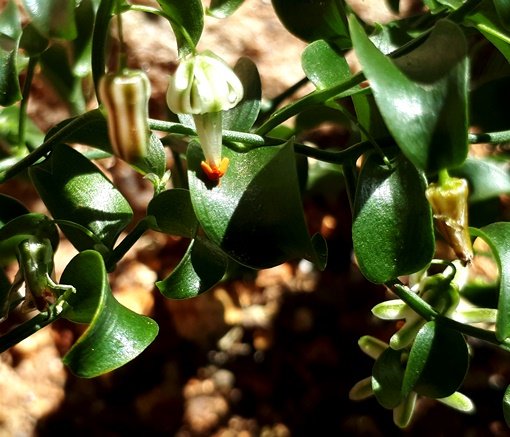Asparagus ovatus

Author: Ivan Lätti
Photographer: Jack Lätti
Asparagus ovatus, previously Myrsiphyllum ovatum, is a straggling plant growing stems from 1 m to 3 m long. Spindle-shaped tubers grow remote from the plant’s underground rhizome on slender roots.
The alternate leaves (actually false leaves or cladodes) are similar to those of A. asparagoides, a closely related plant. The leaves are stalkless, ovate and tapering to acutely pointed tips. In picture the leaves curve down to their tips and in from the margins. The leaves are glossy, deep green and may be finely longitudinally lined.
Up to three nodding flowers grow from an upper leaf axil. They are white with brown midribs, which are in picture darker on the closed, cylindrical bud than the inside surfaces of the strongly recurved segments of the open flower.
The stamens cohere erectly in the flower centre, the white filaments forming a cone below the orange, oblong anthers. Flowering happens in the second half of winter.
The fruit is a three-locular, nearly spherical berry starting off green and turning red as it ripens. It grows on a longish stalk.
The species distribution is in the Western, Eastern and Northern Cape.
The habitat is coastal and inland where the plants grow in shade among diverse scrub. The species is not considered to be threatened in its habitat early in the twenty first century (Manning, 2007; Bond and Goldblatt, 1984; iNaturalist; http://redlist.sanbi.org).

